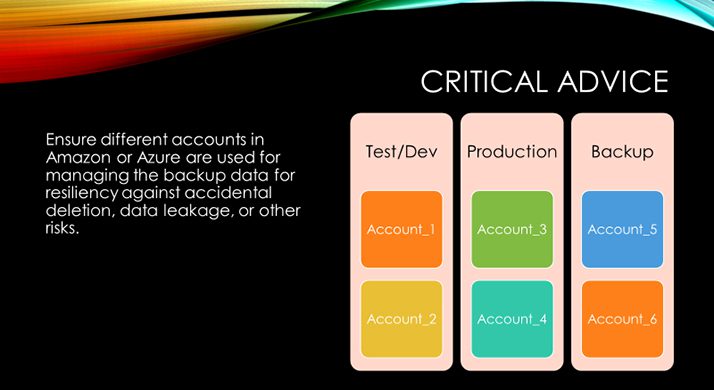Hybrid cloud migration: 6 essential steps for state and local agencies:
How do you address common concerns about implementing hybrid cloud?

With hybrid cloud, local and state governments can do everything from roll out new services more quickly and improve inter-departmental collaboration to eliminate redundant IT expenditures and add vital operational benefits.
So why aren’t all government agencies adopting hybrid cloud? As you might know first-hand, there are a number of concerns around the hybrid cloud model that can keep agencies stuck in place. In short, change isn’t easy – and that’s especially true when it comes to changing your IT infrastructure.
How do you address common concerns about implementing hybrid cloud? What steps can you take to increase your chances of success? Let’s discuss.
Reservations surrounding hybrid cloud
When we talk to government agencies, we hear a number of common trepidations about switching to a hybrid cloud model. They’re valid concerns and should be part of any due diligence ahead of hybrid cloud adoption:
- Security – How can you effectively secure data across multiple environments?
- Funding – Budgeting and funding cycles are often committed years in advance, thus making it difficult to secure the money needed for a technology initiative of this magnitude.
- IT infrastructure and staffing – Some workloads are too sensitive or old to operate in the cloud. Agencies will be forced to leave certain IT operations in a traditional data center. This creates financial strain, forces you to hire additional staff to maintain the legacy systems, and may actually hinder your ability to recruit, retain, or hire qualified employees to oversee the hybrid cloud (this is a major problem in and of itself).
- Leadership buy-in – It’s difficult to build a successful business case for a hybrid cloud initiative when agency leaders aren’t on the same page. Adopting hybrid cloud can’t happen without all parties buying in.
Fortunately, many agencies have overcome these issues by taking a number of steps before and throughout a migration.
Steps for developing a hybrid cloud strategy
You have certain choices to make should you decide to proceed with a hybrid cloud initiative.
You’ll need to determine where to move certain workloads. You’ll need to figure out if you’re going to adopt a new economic paradigm or a new application architecture paradigm. You’ll also need to look at all your workloads and determine which service model and deployment model works best for each, as well as which vendor – or vendors – you want to work with on the project.
While a hybrid cloud implementation is a complex undertaking, there are certain steps you can take during the planning stage to help ensure the likelihood of success:
- Build a foundation – Produce your own value case and workforce plan and determine the cloud model that fits your needs. Then conduct a service readiness assessment. Things to consider when developing your cloud strategy:
- Design your services for the cloud
- Use public cloud services as your default
- Avoid customization by using cloud services as they come
- Use as much of the cloud as possible
- Make risk-based decisions when applying cloud security
- Leverage cloud automation practices
- Monitor the usage and health of cloud services in real-time
- Get buy-in from leadership and stakeholders – Find out what issues are important to each stakeholder and what they hope to gain from this project. Also, try to understand their fears. With their concerns in mind, talk to them about the benefits of this undertaking and address the challenges they foresee.
- Work with budget authorities on funding – This is going to be a collaborative effort and will require all parties to be on the same page financially.
- Create a cloud responsibility model and implement layered cloud certification – Control over the security of different workloads varies in the hybrid cloud. Determine which aspects of security you wish to control as part of a cloud responsibility model, and check those preferences against what different cloud vendors offer. Implementing a layered cloud certification model will allow you to leverage many of the practices you already have in place for certification of your IT systems.
- Learn and address the essential steps in cloud procurement individually.
- Carefully assess the cloud-specific terms of service and make adjustments as needed
- Ensure the procurement process complies with government policies
- Identify the most suitable cloud service and deployment models
- Determine the implications of choosing each cloud provider and service model
- Choose joint procurement to benefit from economies of scale
- Consider a proof of concept or pilot
- Define eligibility criteria for cloud service providers
- Clearly identify the requirements related to technology, legal issues, and commercial concerns
- Choose a suitable technology provider – You will need practical guidance as you build out your hybrid cloud solution. Find a technology partner that will be able to help you with your needs.
Gain commitment from everyone
Following the blueprint for implementing a hybrid cloud will make things easier for local and state governments, but it doesn’t necessarily guarantee success. In the end, it starts with the people within the agency.
Switching to hybrid cloud is a big change. And the migration is going to affect a lot of individuals. It’s vital that you keep all stakeholders engaged. The more involved they are in the process, the more likely the implementation will be a success. Remember, you can’t do this alone.




